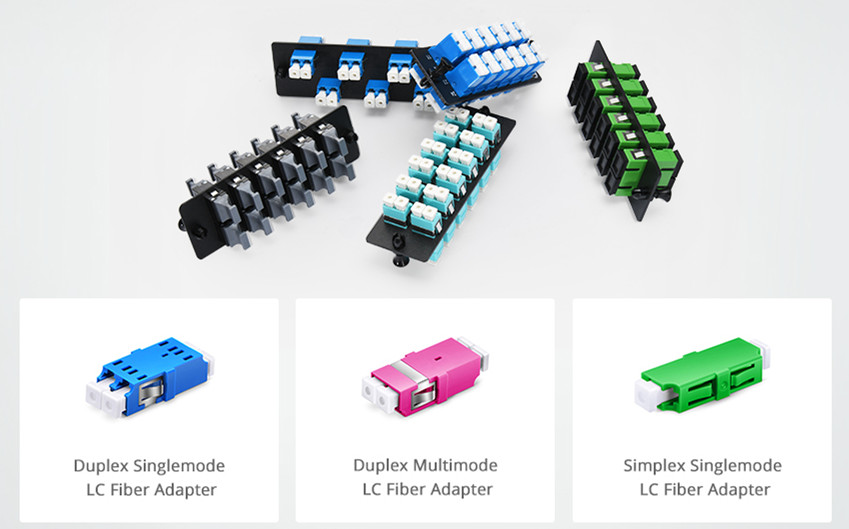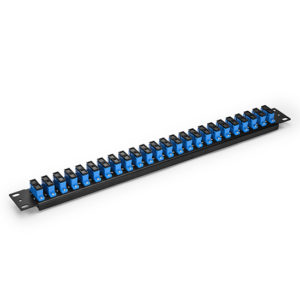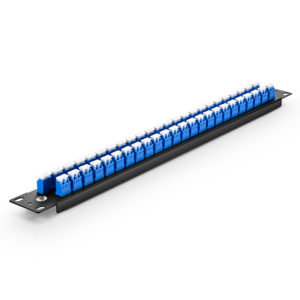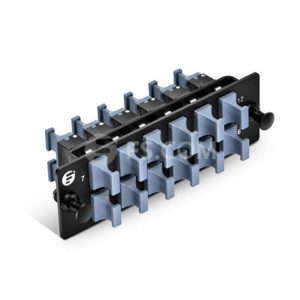In cabling system, patch panel is used for cable management. But how? In short, when the patch cables are connected with telecommunication equipment, they have to go through the adapters in the patch panel to achieve the wiring function. Here, patch panel functions as the protector of cables or pigtails. Commonly, patch panel can be divided into different categories according to different ports, 12 port patch panel, 24 port patch panel and 48 port patch panel. And for small LAN network, the best option is 24 port patch panel especially the 24 port blank keystone patch panel.
What Is 24 Port Blank Keystone Patch Panel
24 port blank keystone patch panel, also known as the unloaded patch panel, is one option of 24 port copper patch panel. Typically, instead of the pre-positioned connectors design, it adopts the design of 24 individual empty holes which allow users install the connectors based on their own needs to link different copper cables. The empty holes are called keystone jacks that can be terminated to the cables such as shield or unshield CAT5e or CAT6, and then quickly inserted into the patch panel. This type of patch panel is designed to support the distribution of voice, data, and video for commercial or residential applications. FS.COM offers 24 port unshielded blank keystone patch panel, it’s suitable for any standard 19 inch relay rack, cabinet or wall bracket. With a flat style and clear port number, cable management becomes easier. And its removable cable manager will allow users to fix cables simply.
Reasons to Use Blank Keystone Patch Panel
Compared with the traditional patch panel, blank keystone patch panel enjoys several advantages, which actually encourage people to choose blank keystone patch panel.
- More flexible design. No keystone jack is pre-installed into the blank keystone patch panel, so it can be customized based on specific application. FS.COM 24 port blank keystone patch panel accepts all RJ45 modules, which means technicians will not struggle with the decision whether to use CAT5e or CAT6 when they need the versatility of running different types of networking cable on one project. The blank keystone accommodates a wide variety of easy to snap-in modules, making configuration flexibility.
- Better cost-effectiveness. The special design and easy installation make a low initial investment cost. Use one blank keystone patch panel, users can connect CAT5e and CAT6 simultaneously without buying theCAT5e patch panel and CAT6 patch panel. Besides, with pre-labeled ports and write-on areas on the front, the blank keystone patch panel helps trace and identify cable runs to stay in order.
Install 24 Port Blank Keystone Patch Panel for Ethernet Cabling
First, prepare the equipment. No extra tools are required except the essential equipment, 24 port blank keystone patch panel, CAT5e and CAT6 RJ45 insert modules.
Second, to fit one’s need, choose the proper quantity of different RJ45 modules. Then insert them onto the 24 port blank keystone patch panel one by one.
Third, screw the assembled 24 port blank keystone patch panel in a 19 inch rack. Plug the CAT5e cables into the CAT5e coupler keystone insert module and insert CAT6 cables into the CAT6 module, then handle the cables in sequence.
Last, take a visual inspection of the equipment to make sure everything works well.
Conclusion
24 port blank keystone patch panel provides connectivity for RJ45 insert modules data services, playing an important role in supporting the cloud. For your convenience, FS.COM offers different types of blank keystone patch panel to help technicians finish your networking project on budget and on time.



